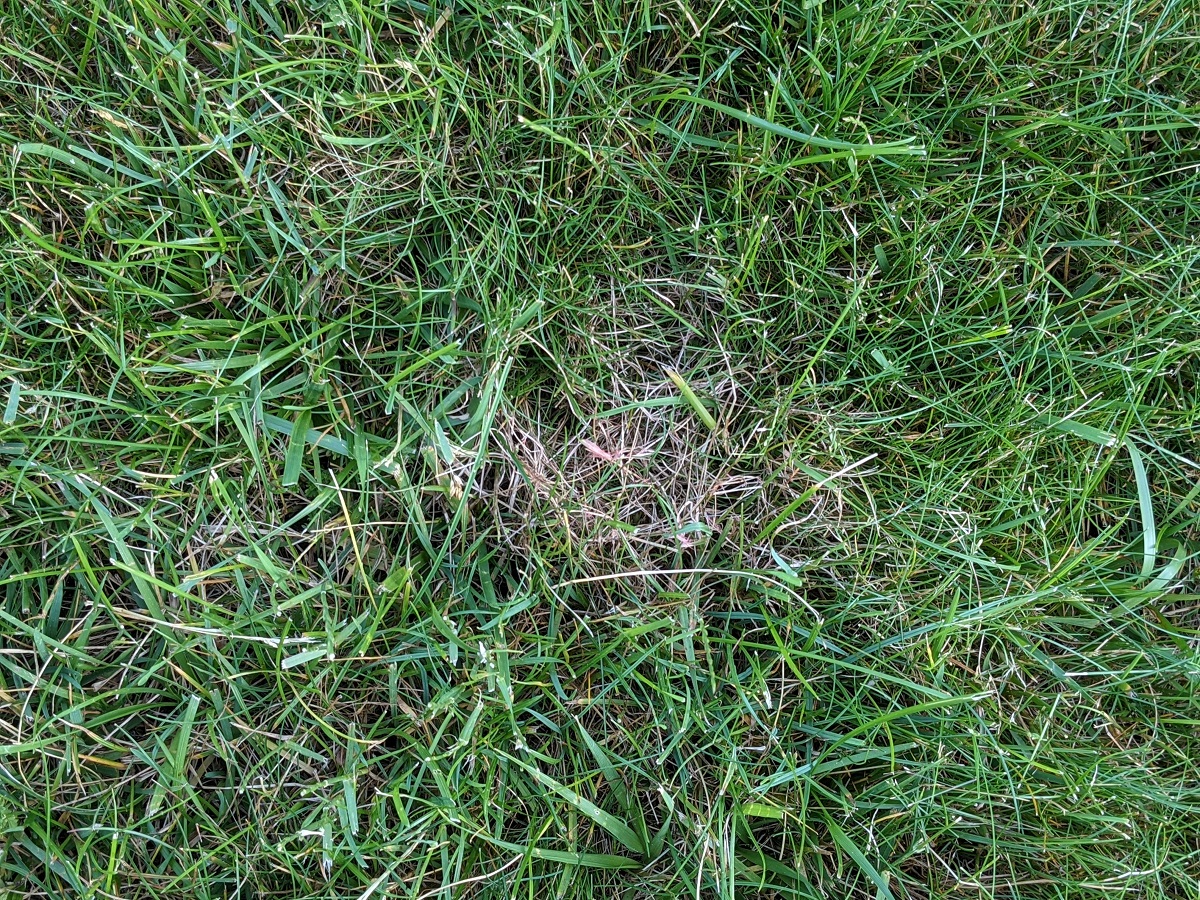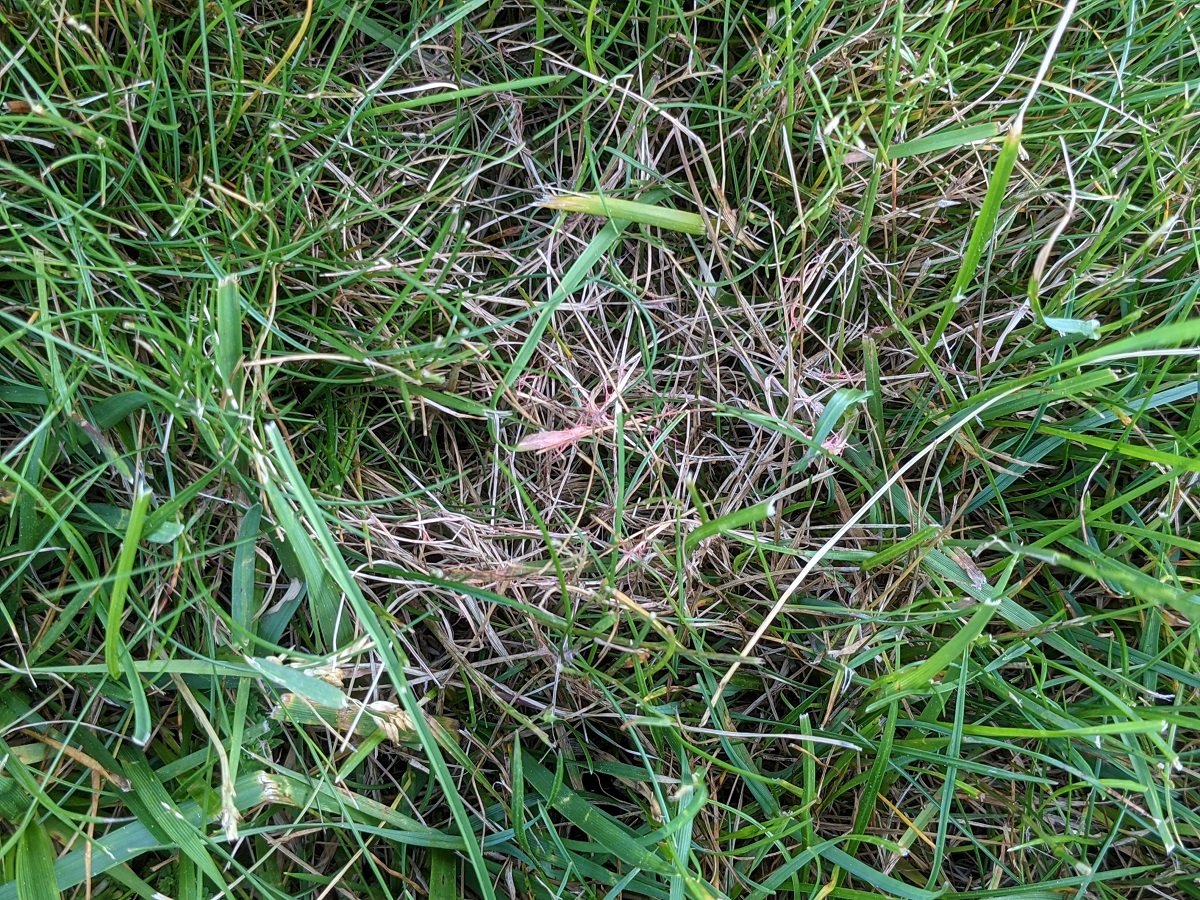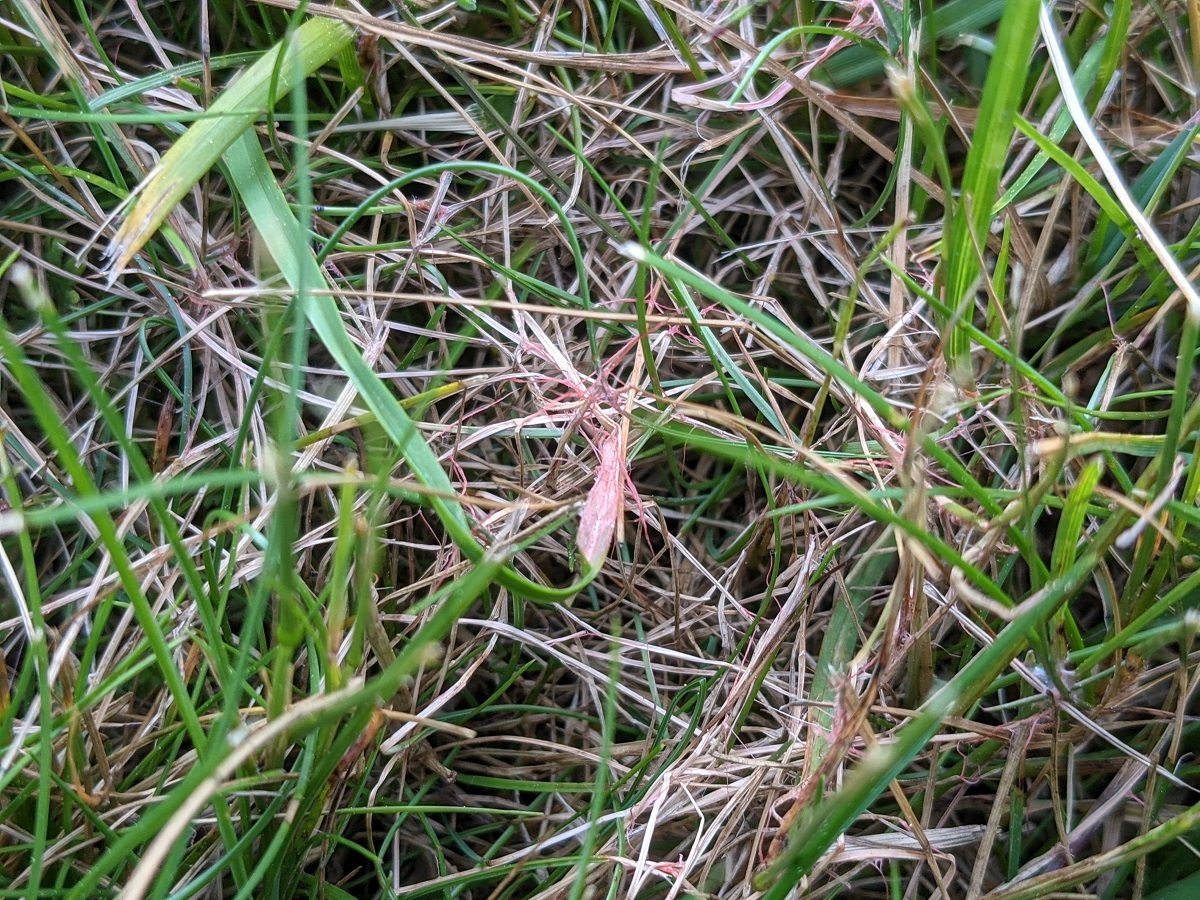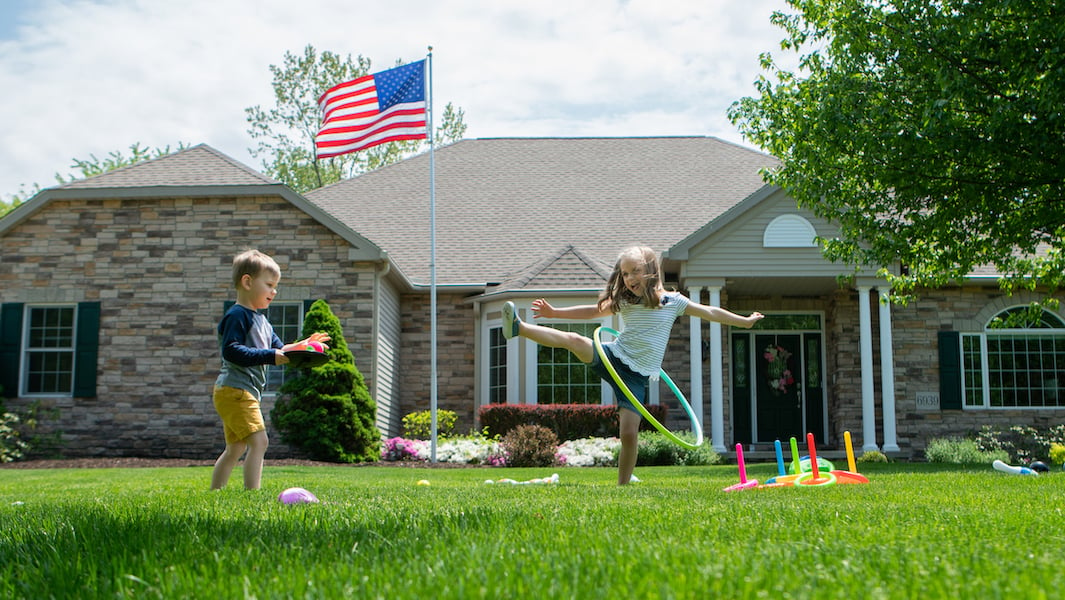
How to Stop Red Thread From Taking Over Your Lawn
Green lawns are all the rage in Northeast Ohio.
Imagine a yellow lawn or a brown lawn; it just wouldn’t be the same.
And a lawn with spots? Forget about it.
A lawn is definitely more inviting when it’s a nice shade of green. That would be your preference for an enjoyable summer lawn. We get it. We like a green lawn, too.
No one wants to see rough spots and blemishes.
If you see some weird light green or even pinkish spots showing up in your lawn, it can certainly be a cause for concern.

And you’re not wrong to worry. In fact, certain conditions can cause this issue, which can actually be a lawn disease. One particular disease that can result in patches like this is red thread.
Let’s look at what the red thread fungus is, what causes it, and how you can get rid of red thread in grass for good so you can get that green, healthy lawn back.
All About Red Thread in Lawn
That first time you notice a strange, reddish-pink patch in your lawn, you might think you’re imagining it. Or maybe it’s just the way the light is settling over the area.
It’s when you take a closer look that you realize how different the areas look from your regular and familiar green grass blades.
The cause? A disease called red thread fungus, which is actually named after its pinkish-red, spiky threads that seem to make it look like you have grass with red tips.

Learning more about how to spot this lawn disease can actually help you gain a better handle on controlling it.
What is Red Thread?
While red thread in grass seems distinctive enough when reading about its description, it can still be tough to identify, especially if you’re unfamiliar with this disease.
As an early disease during the Northeast Ohio growing season, red thread likes cool, moist conditions. Spring, unfortunately, can bring that perfect blend of conditions red thread likes.
/Live%20Website%20Images/technicians-kneeling-on-lawn.jpg?width=1200&height=676&name=technicians-kneeling-on-lawn.jpg)
As you look closely, red thread may seem like it results in ragged leaf blades that look like they are dying from the tip down. The disease, in fact, is a growth of the fungus Laetisaria fuciformis. And the reason red thread fungus treatment can be hard is because the red threads can grow beneath beige or light brown grass, masking the disease.
Where Do You Typically Find Red Thread?
In Northeast Ohio, any lawn can be susceptible to red thread fungus.
For the disease to develop, you need the host plant, which is your grass, the disease itself, and the conditions that make it favorable for growth.
Excess rain mixed with temperatures ranging from 59 to 77 degrees Fahrenheit are when red thread likes to make its appearance in grass. This is typically during early spring and fall, and even during the summer under prolonged rainy, cool periods.
If your lawn is lacking in fertilization – particularly nitrogen – this can make your grass weak or stressed. This is where, when those temperatures are present, red thread will emerge. It takes advantage of lawns that are lacking in strength and nutrients.
/TurfPrideSpring2022(WebOptimized)-186.jpg?width=5168&height=2912&name=TurfPrideSpring2022(WebOptimized)-186.jpg)
Then, once the fungus is present, it spreads through wind or even contaminated equipment as it moves from infected areas to uninfected areas of your lawn.
How to Treat Red Thread in Grass
Some of the factors that can cause red thread fungus, like cool, wet weather, are out of your control.
But red thread disease control is possible with some proper lawn care. In fact, following a lot of these steps can limit red thread from making a continued appearance.
Proper Lawn Care is the Best Defense Against Red Thread
Since the conditions that can encourage red thread fungus can appear throughout the growing season, prioritizing preventive measures can help you keep it away.
You’ll be surprised at how some lawn TLC can really amplify your lawn’s appearance and elevate its health and ability to fight diseases.
/TurfPrideSpring2022(WebOptimized)-564.jpg?width=5168&height=2912&name=TurfPrideSpring2022(WebOptimized)-564.jpg)
Here are a few basic things you should keep on your to-do list to minimize red thread fungus:
- Proper watering. Early morning watering ensures your lawn dries out sufficiently before nightfall, preventing those cool, wet conditions red thread likes.
- Keep the air moving. Annual fall aeration helps increase airflow and reduce humidity that causes red thread disease. Adding overseeding to this service helps thicken your lawn and fill in bare spots.
- Fertilize correctly. Fertilizing with the right doses of organic nutrients throughout the year ensures your lawn is strong enough to fight diseases like red thread. You don’t want to neglect fertilization because a lack of nutrients – particularly nitrogen – can encourage red thread fungus growth.
- Mow well. You don’t want to over-mow a lawn because it stresses it out. A thick lawn – 3.5 to 4 inches in height – is best for fighting disease. Mow weekly during the growing season to ensure you’re never cutting more than one-third of the grass blades at any one time, and ensure you have sharp mower blades.
You Can Have a Red Thread-Free Northeast Ohio Lawn
With red thread fungus, the biggest takeaway is that maintaining adequate nutrition supplementation to your lawn lessens any red thread impacts and helps your grass better survive the disease if it does strike.
In fact, if conditions are ripe for red thread to develop, fertilization helps your lawn grow and then you mow away diseased parts as healthy grass takes over and weather conditions improve.
Take good care of your lawn, and your lawn will stand strong for you.
Think you’re doing everything right, but those weird looking splotches won’t disappear? Let Turf Pride help. We have the knowledge about how this Northeast Ohio lawn disease works and can get rid of it quickly so you can enjoy your green lawn again.

Is red thread making you see pink? We’d love to help. Get started today with a free quote. Together, we’ll prepare a customized plan for your Northeast Ohio lawn so you can make an educated decision.


